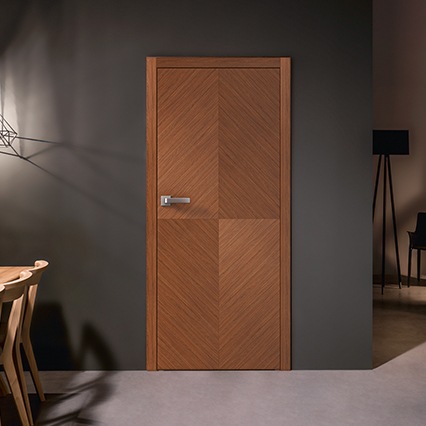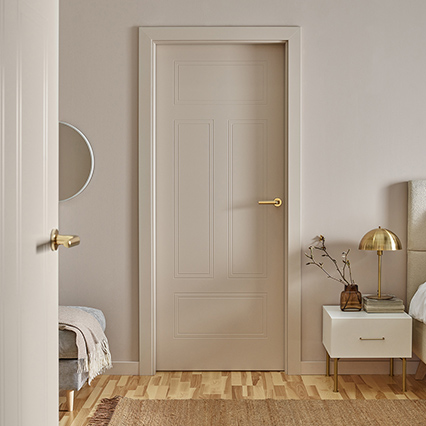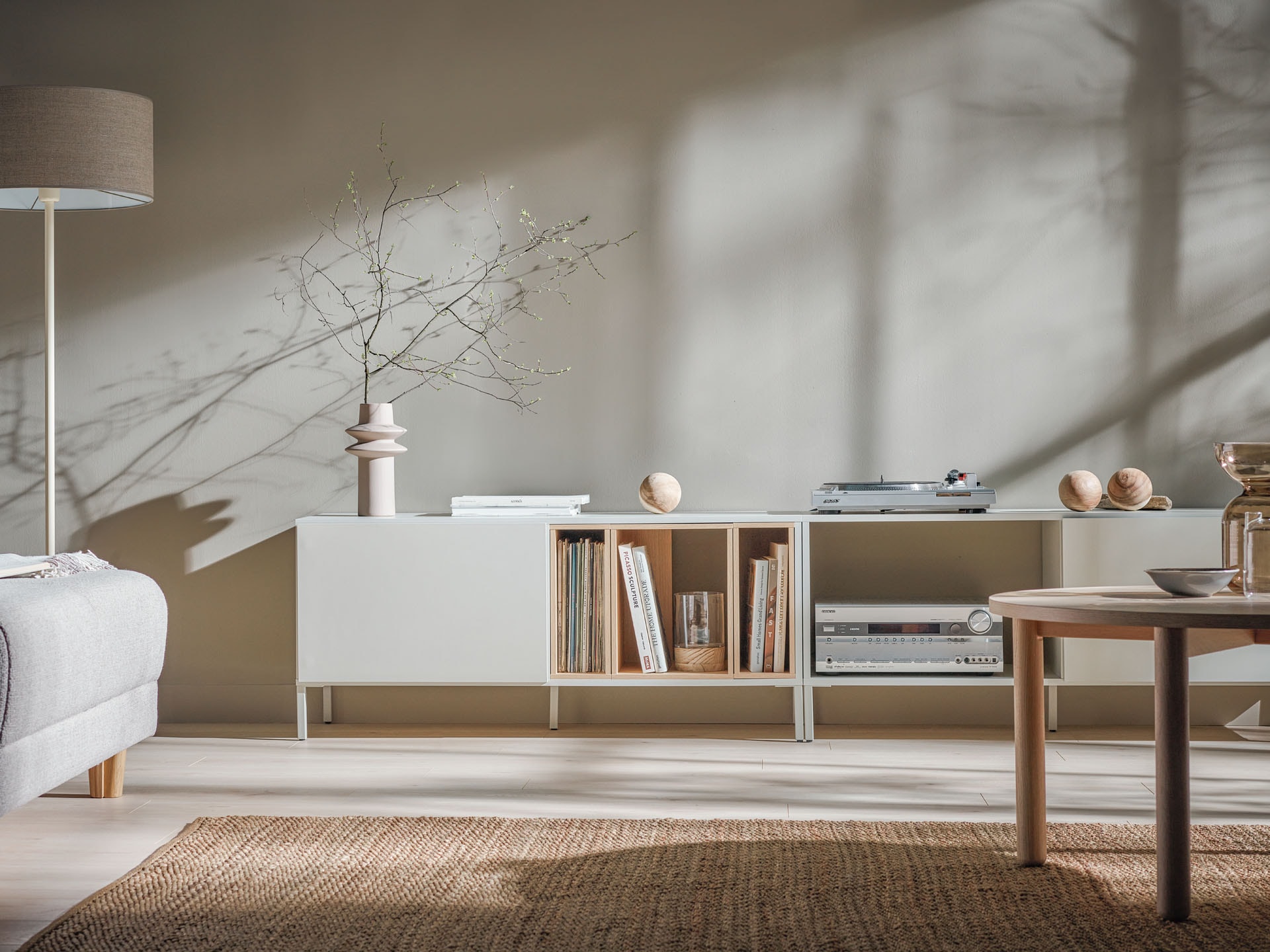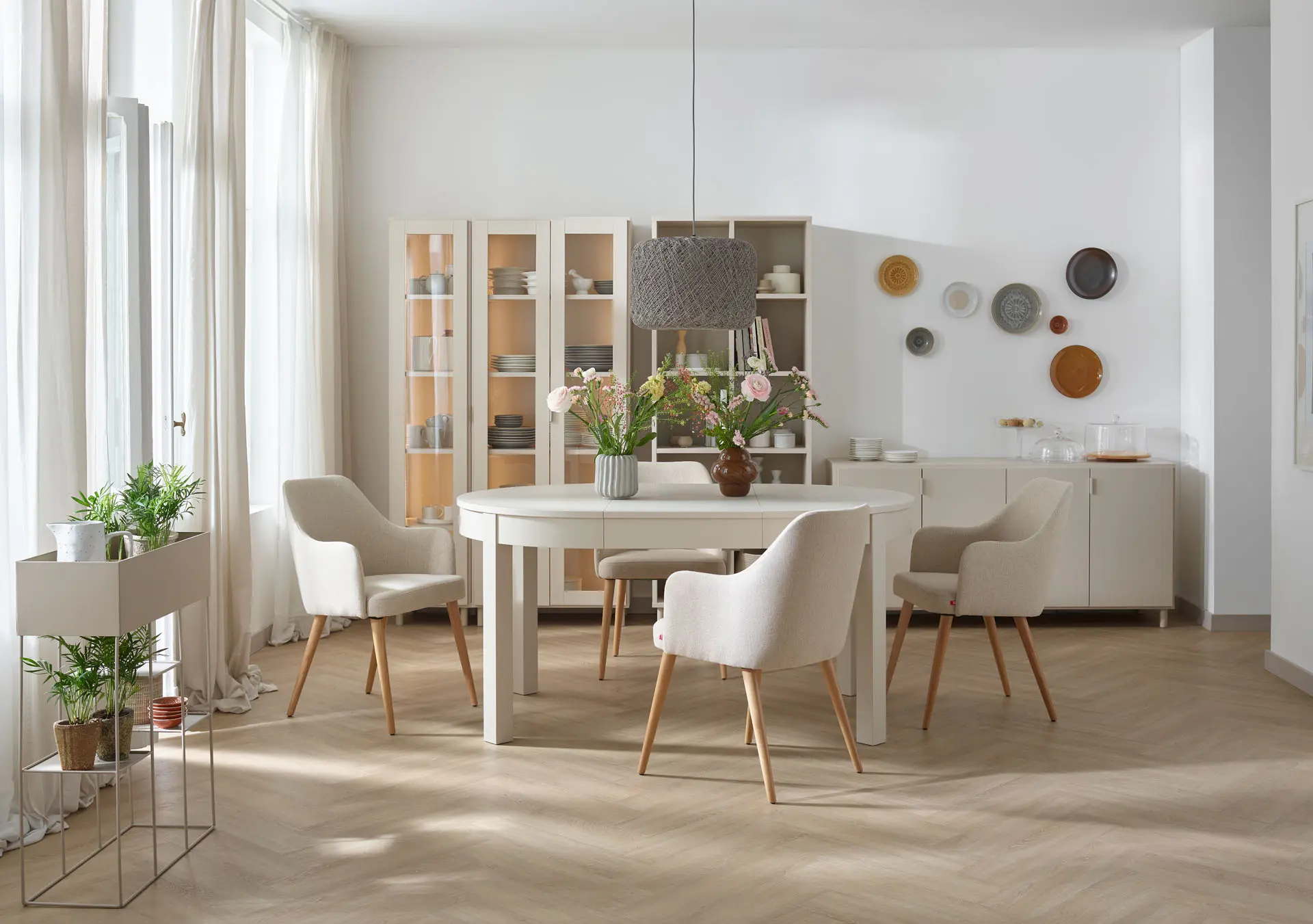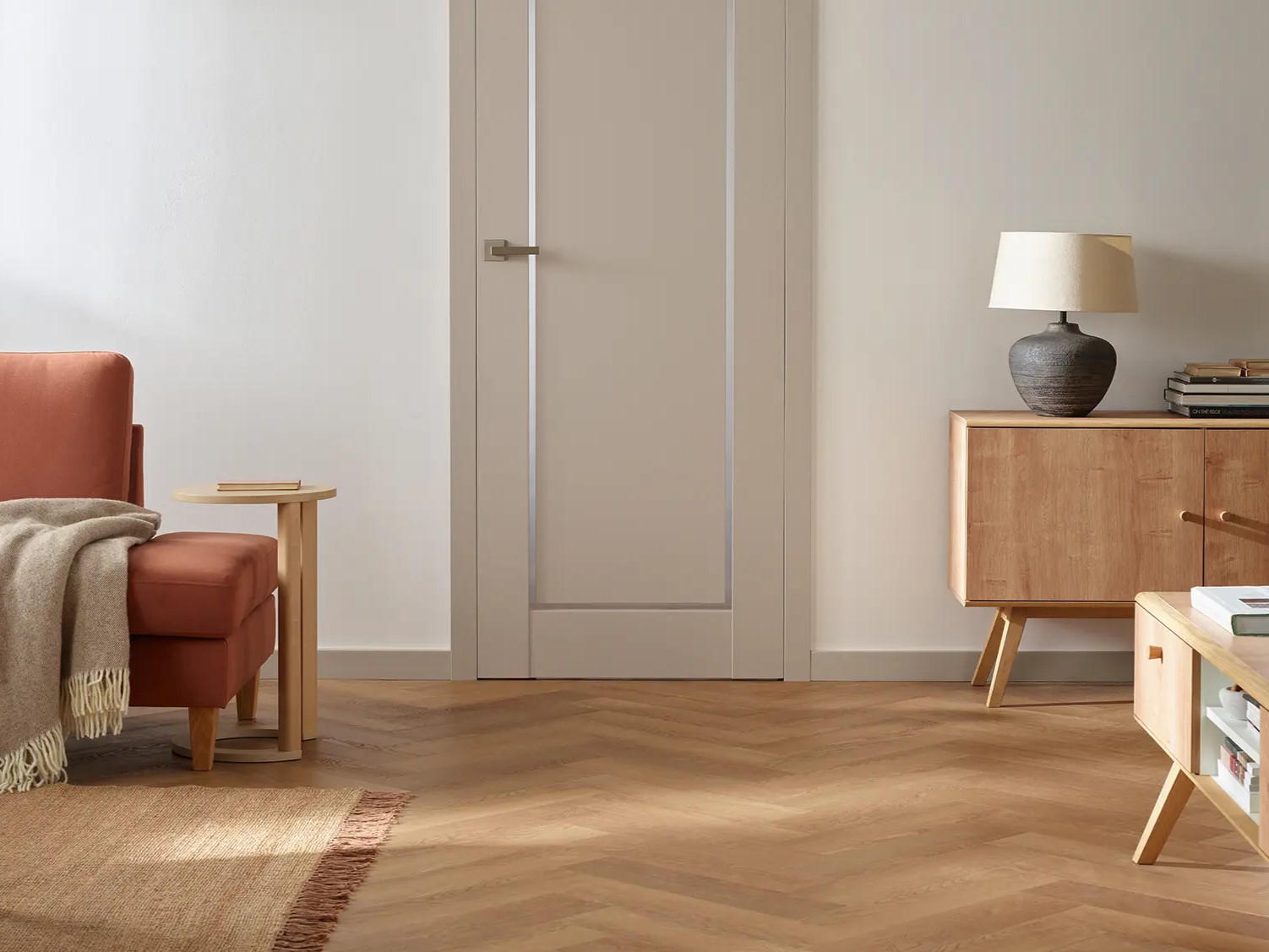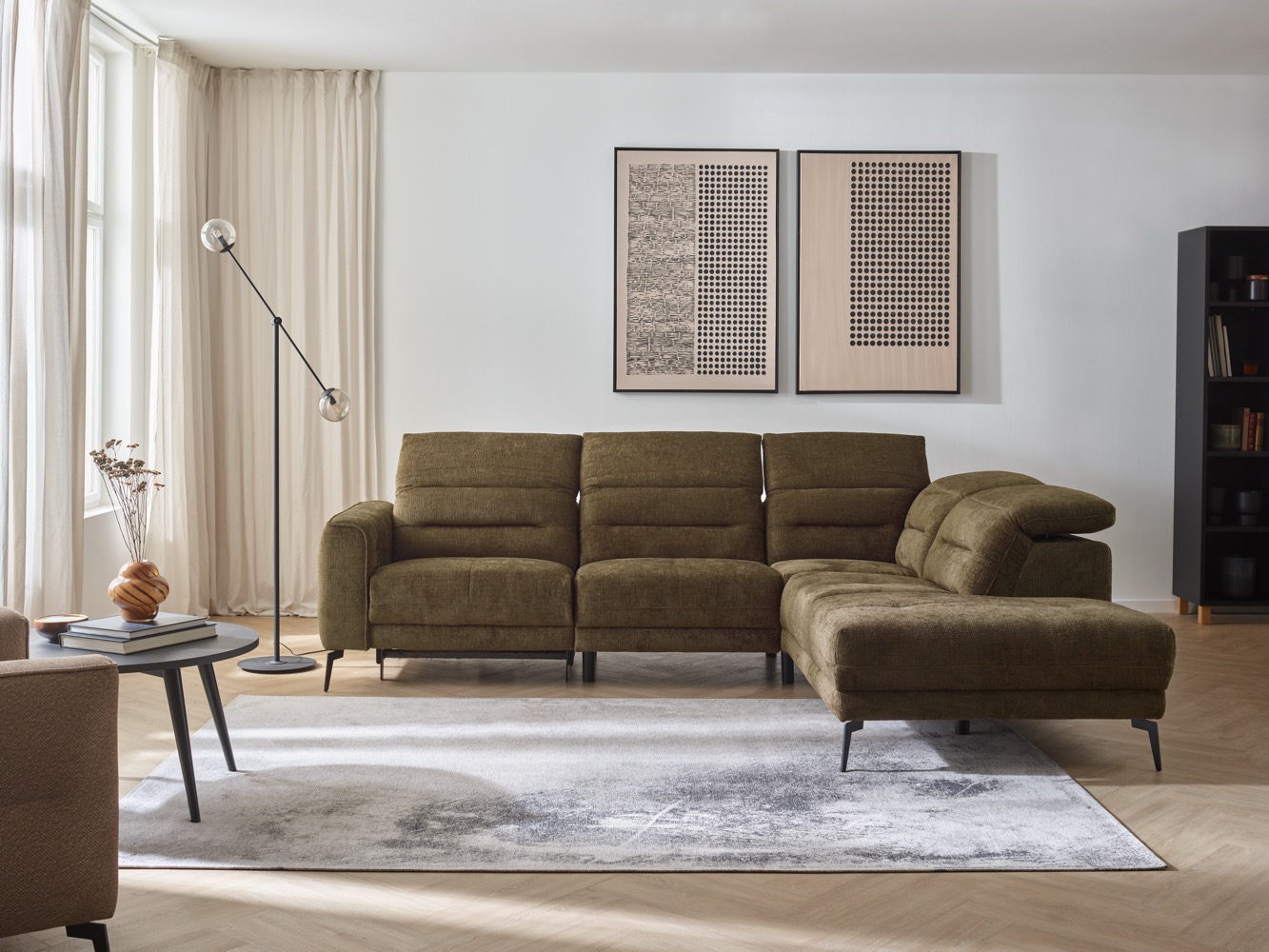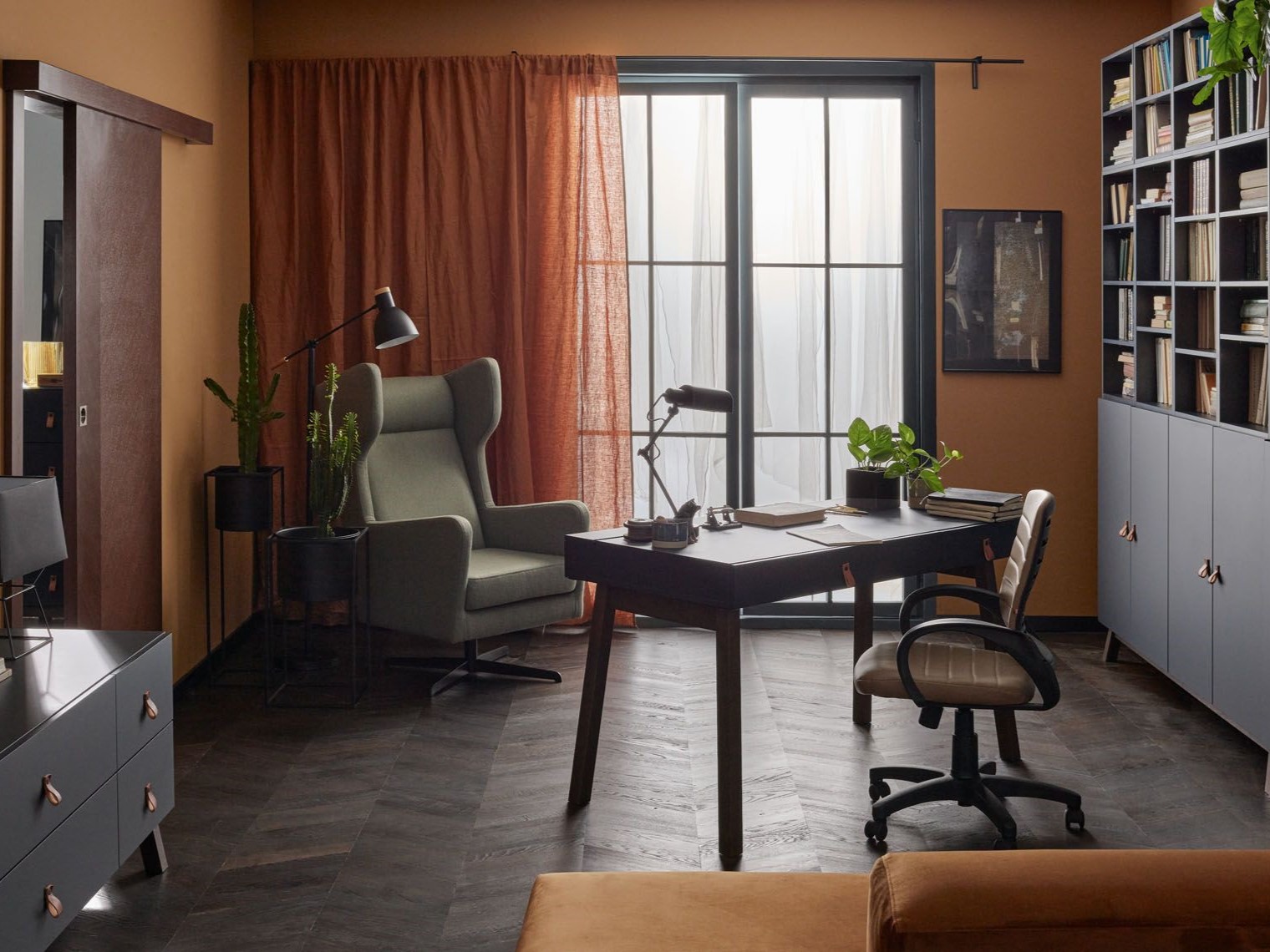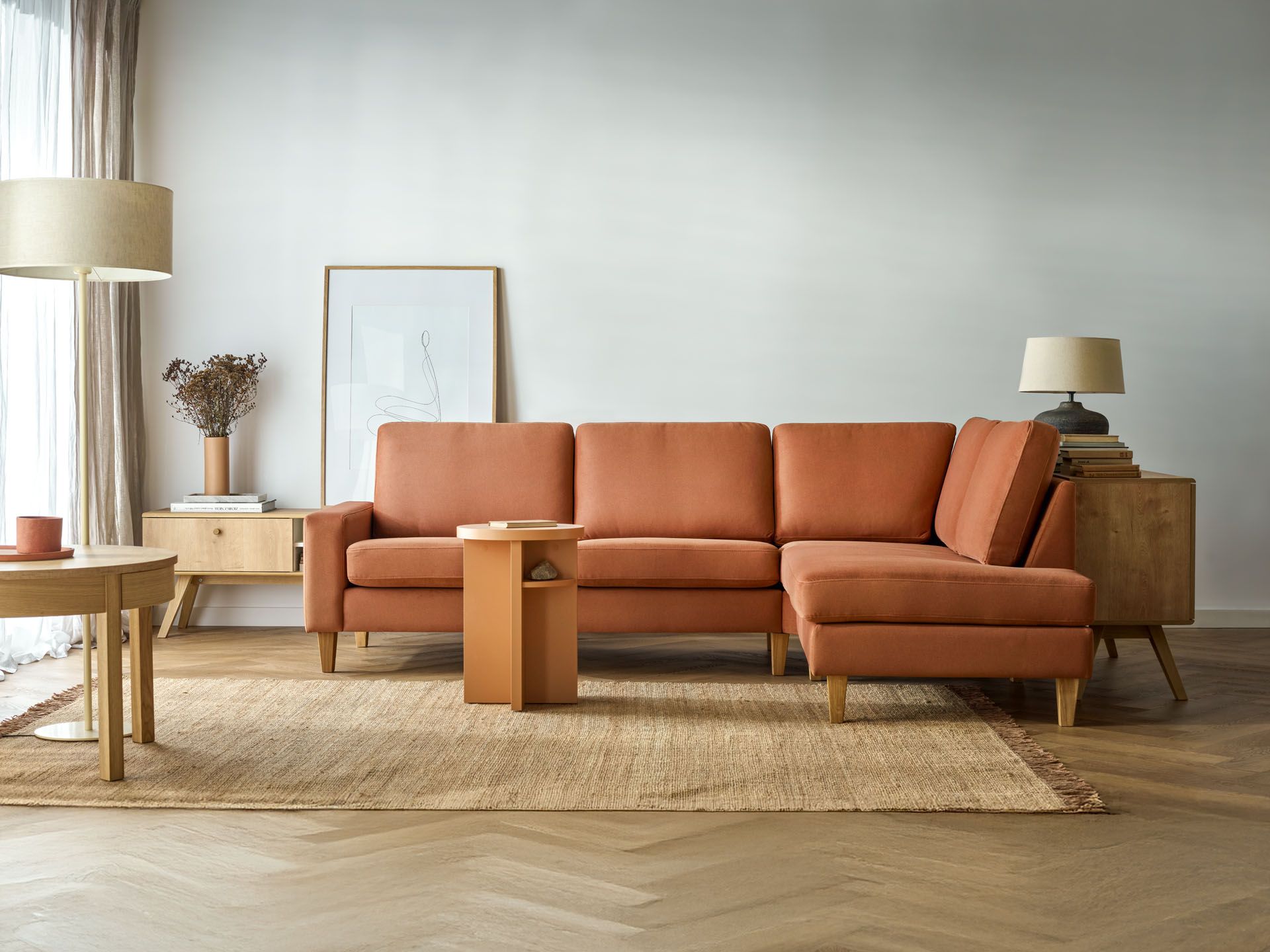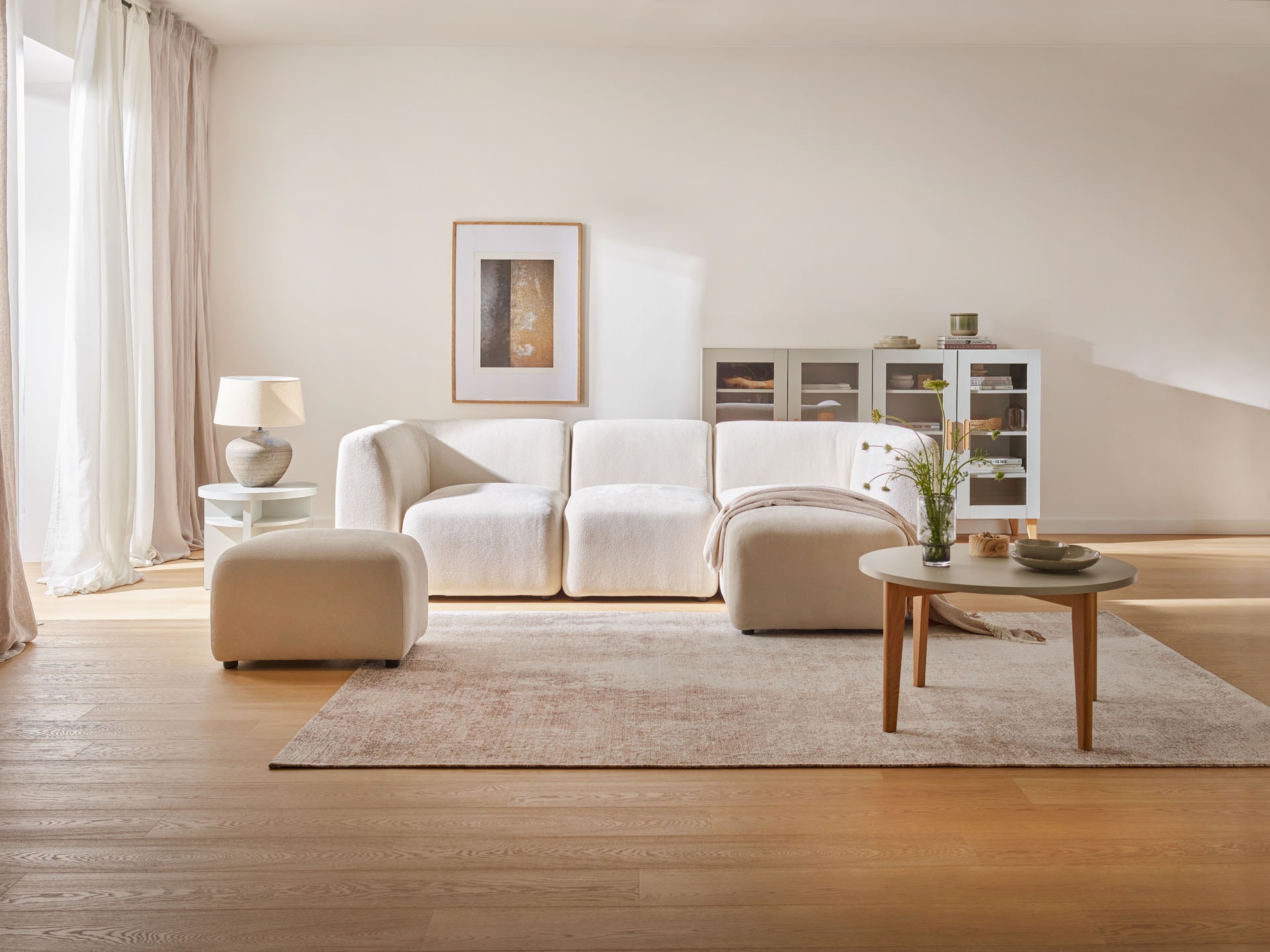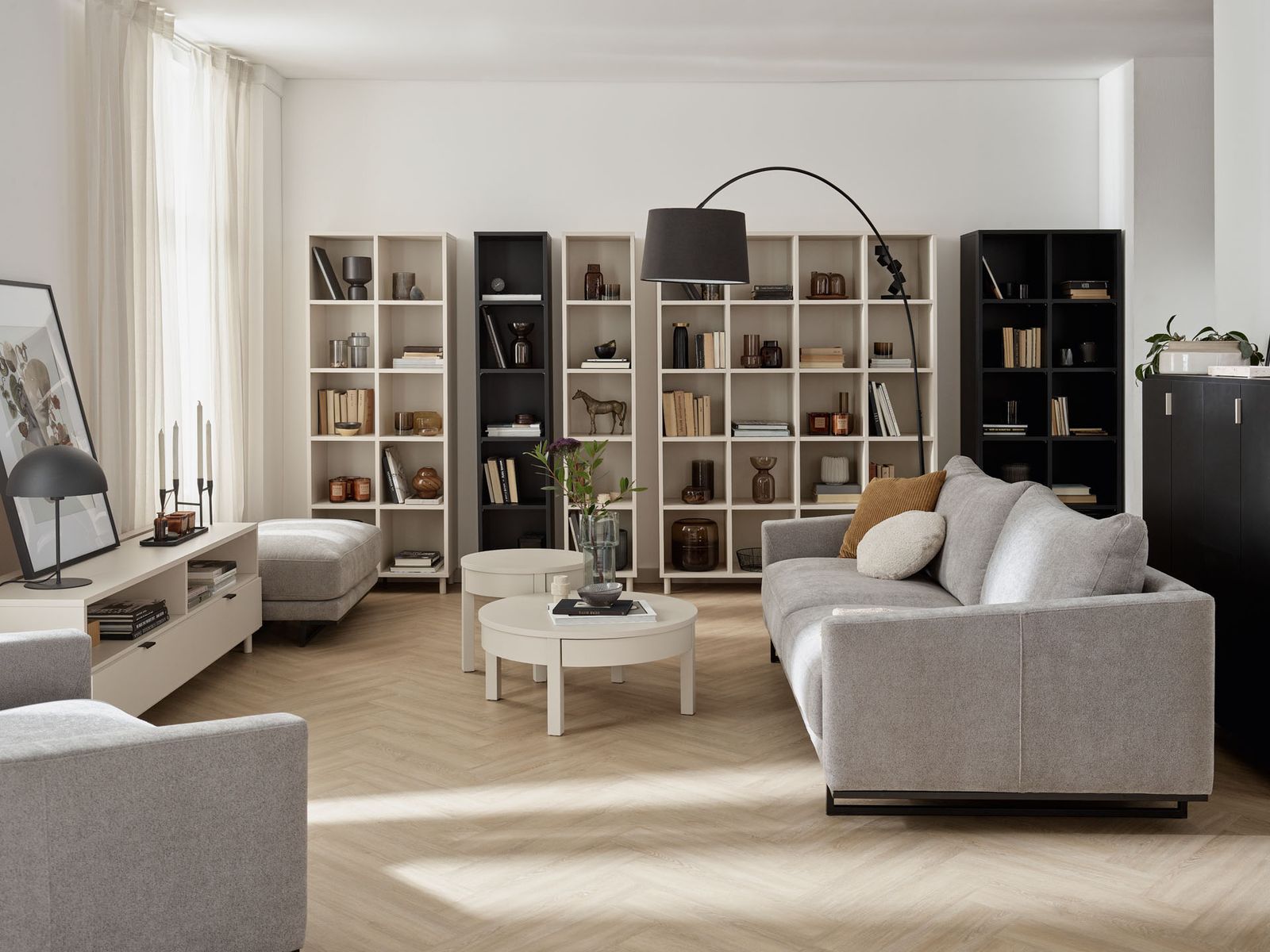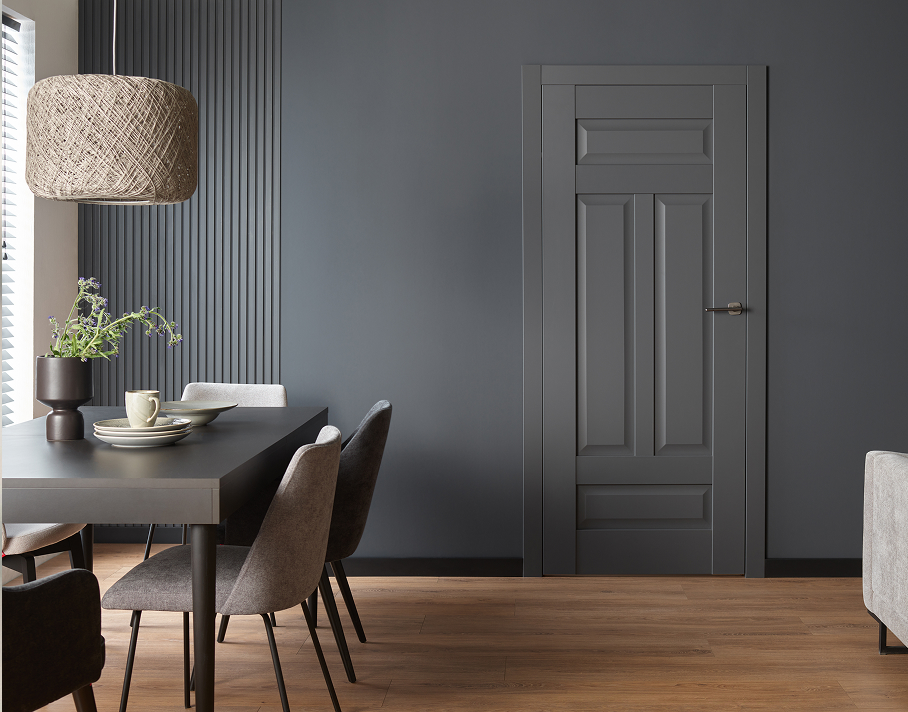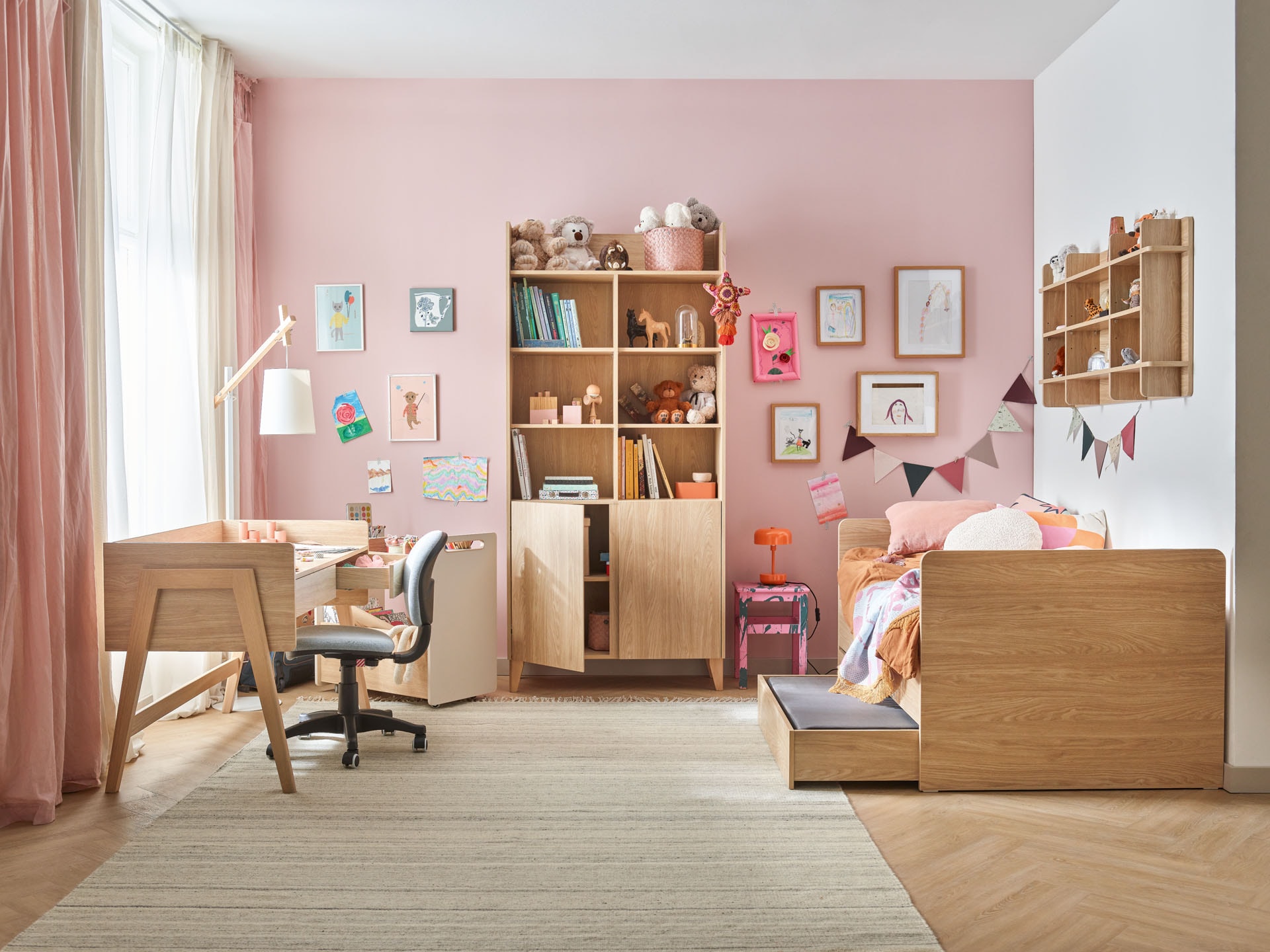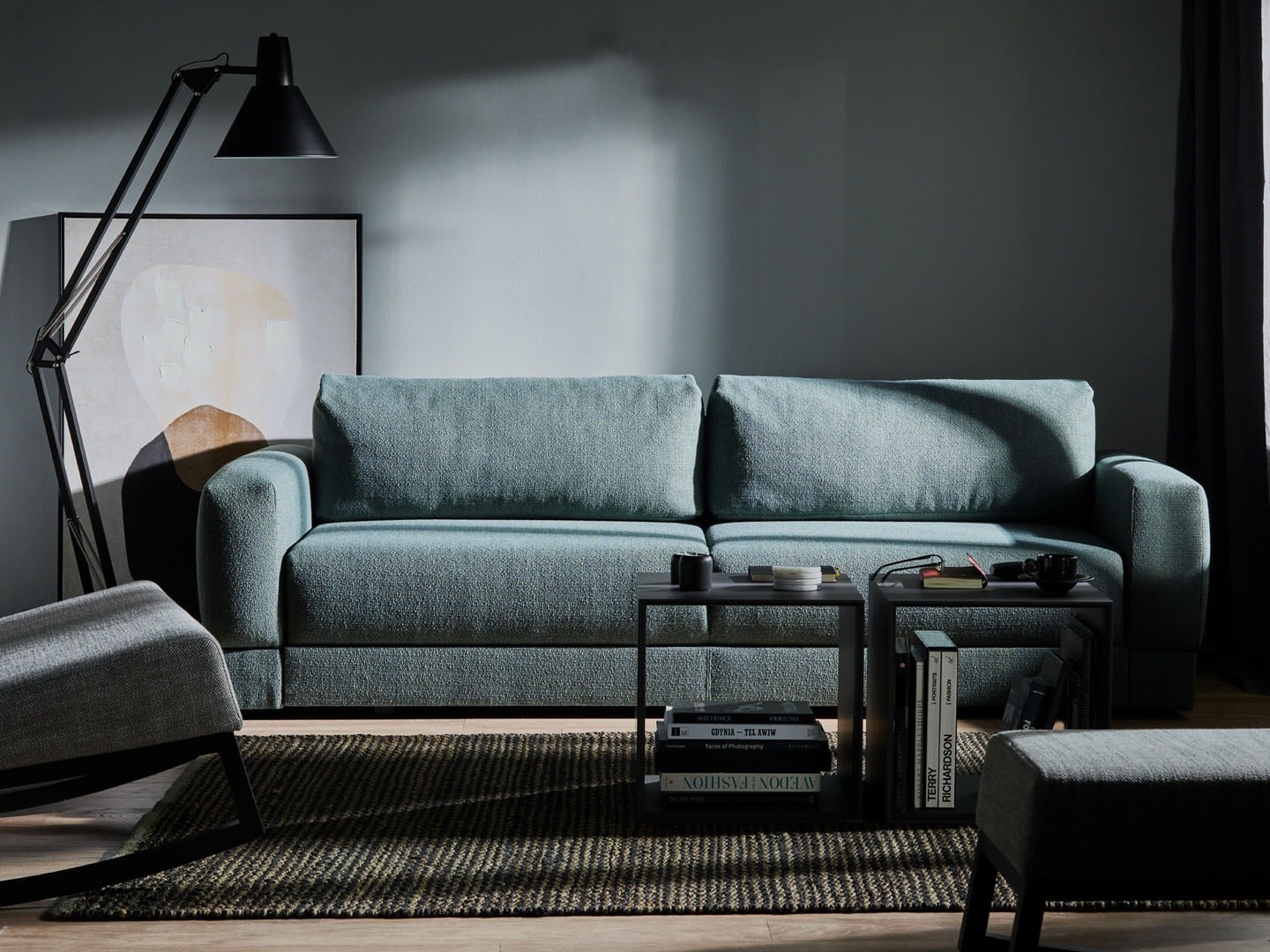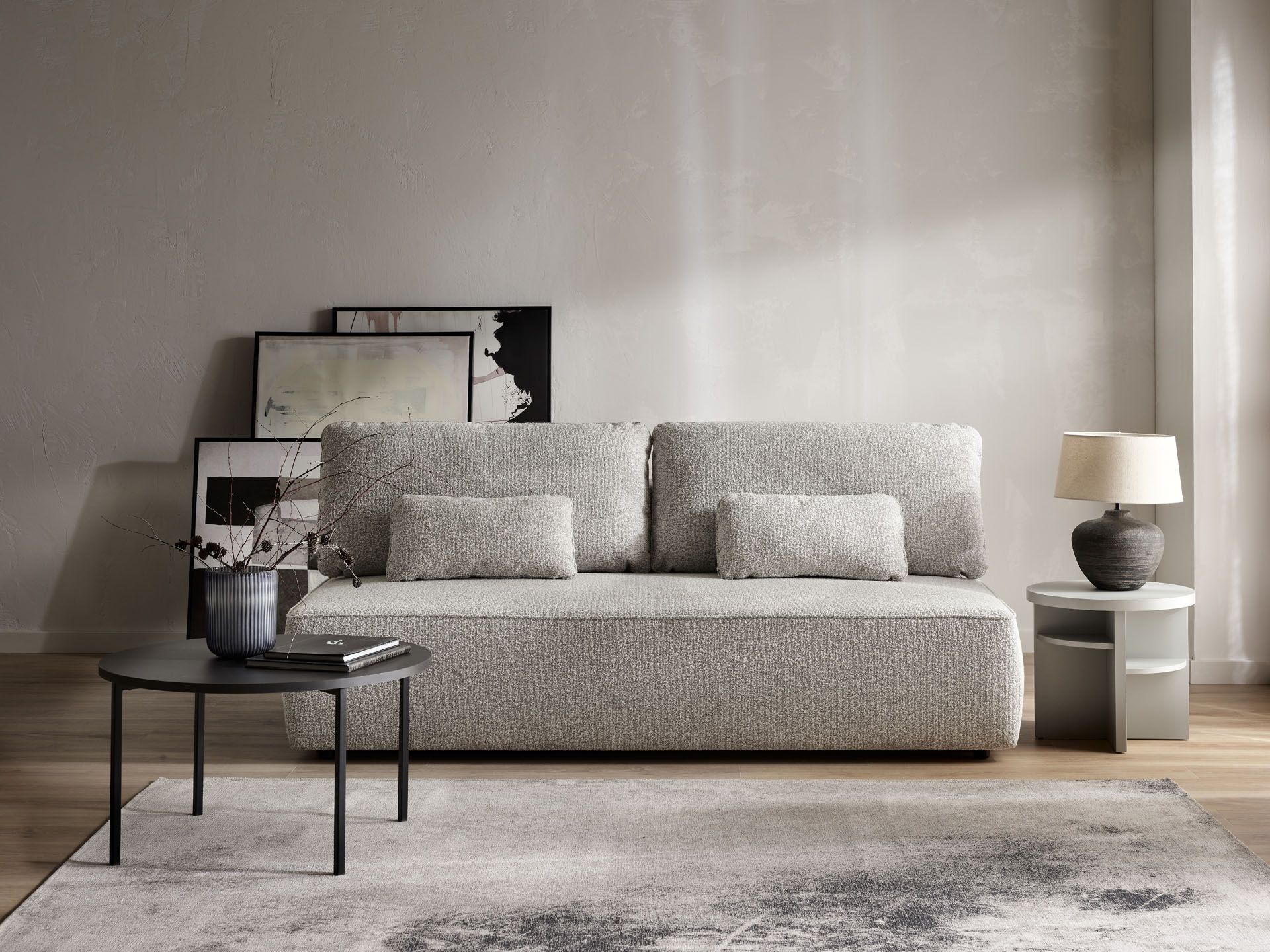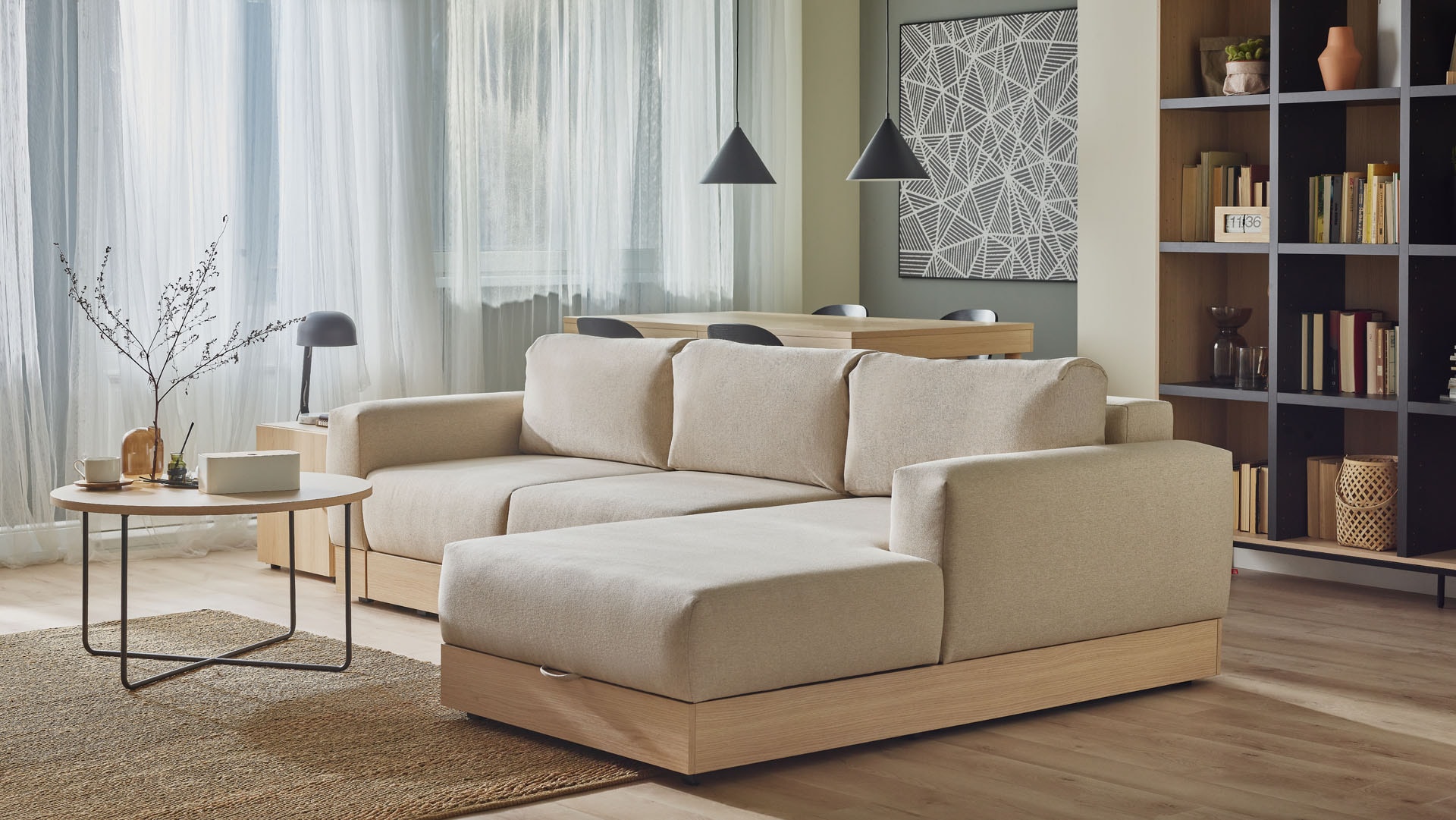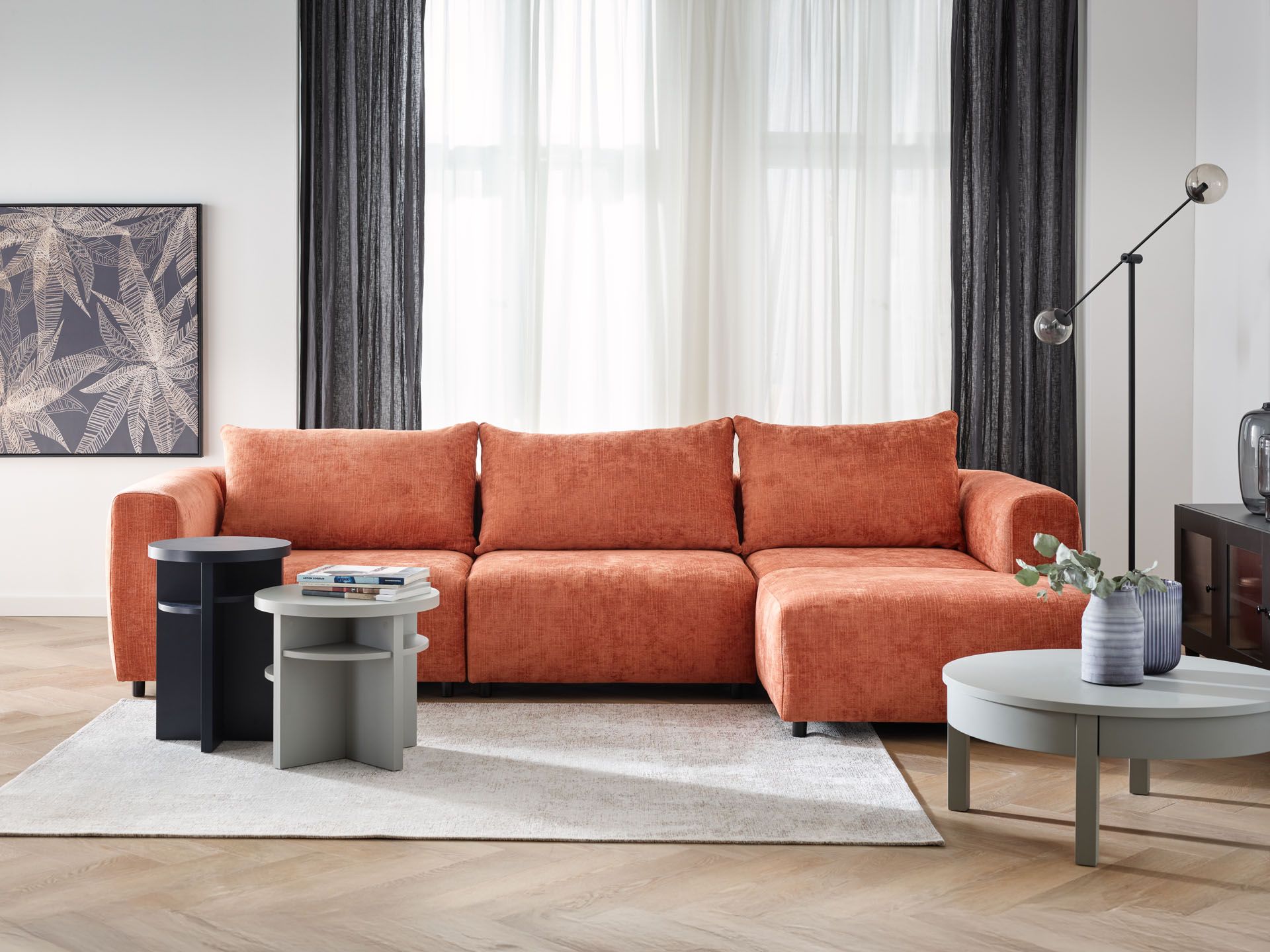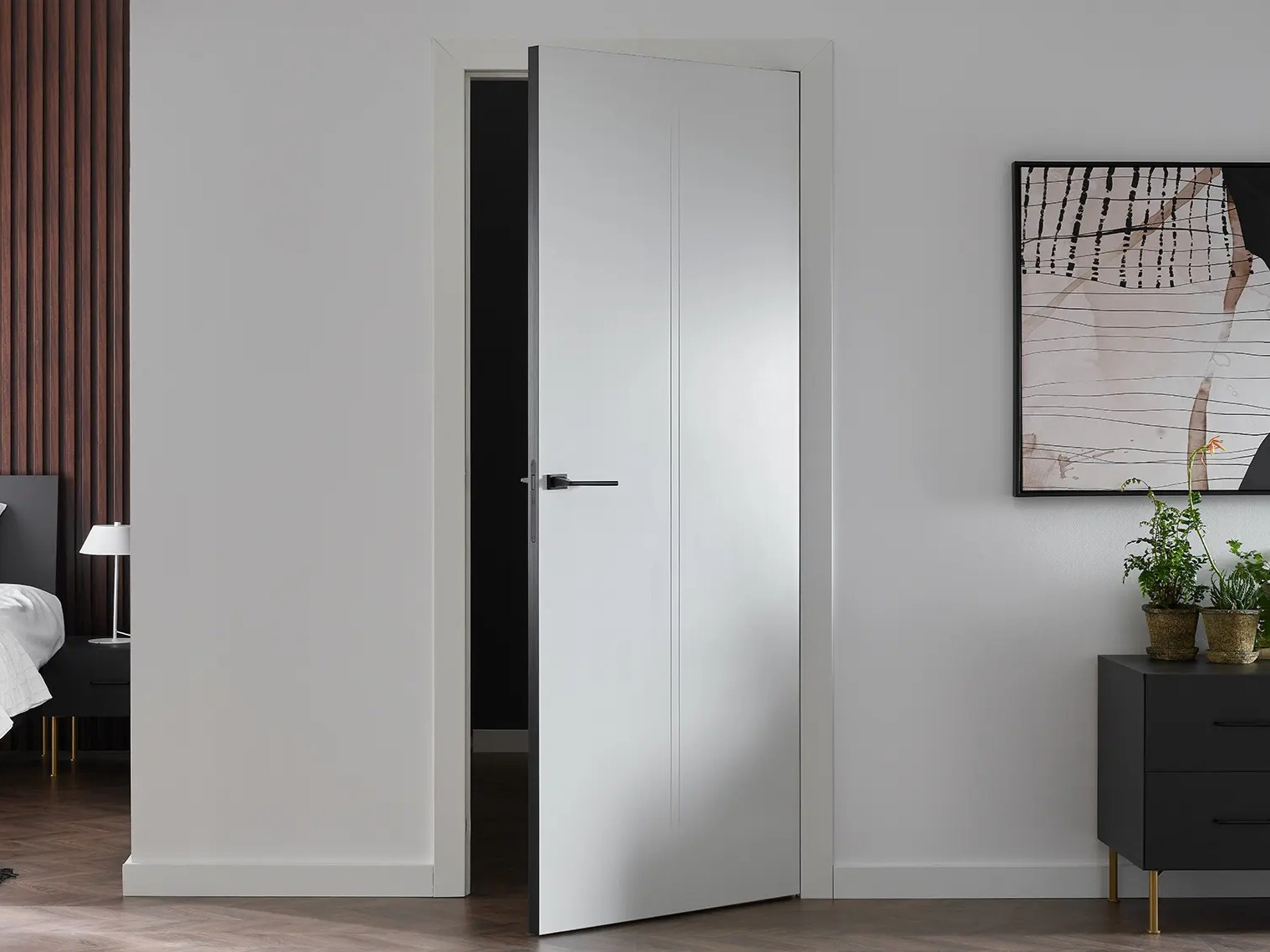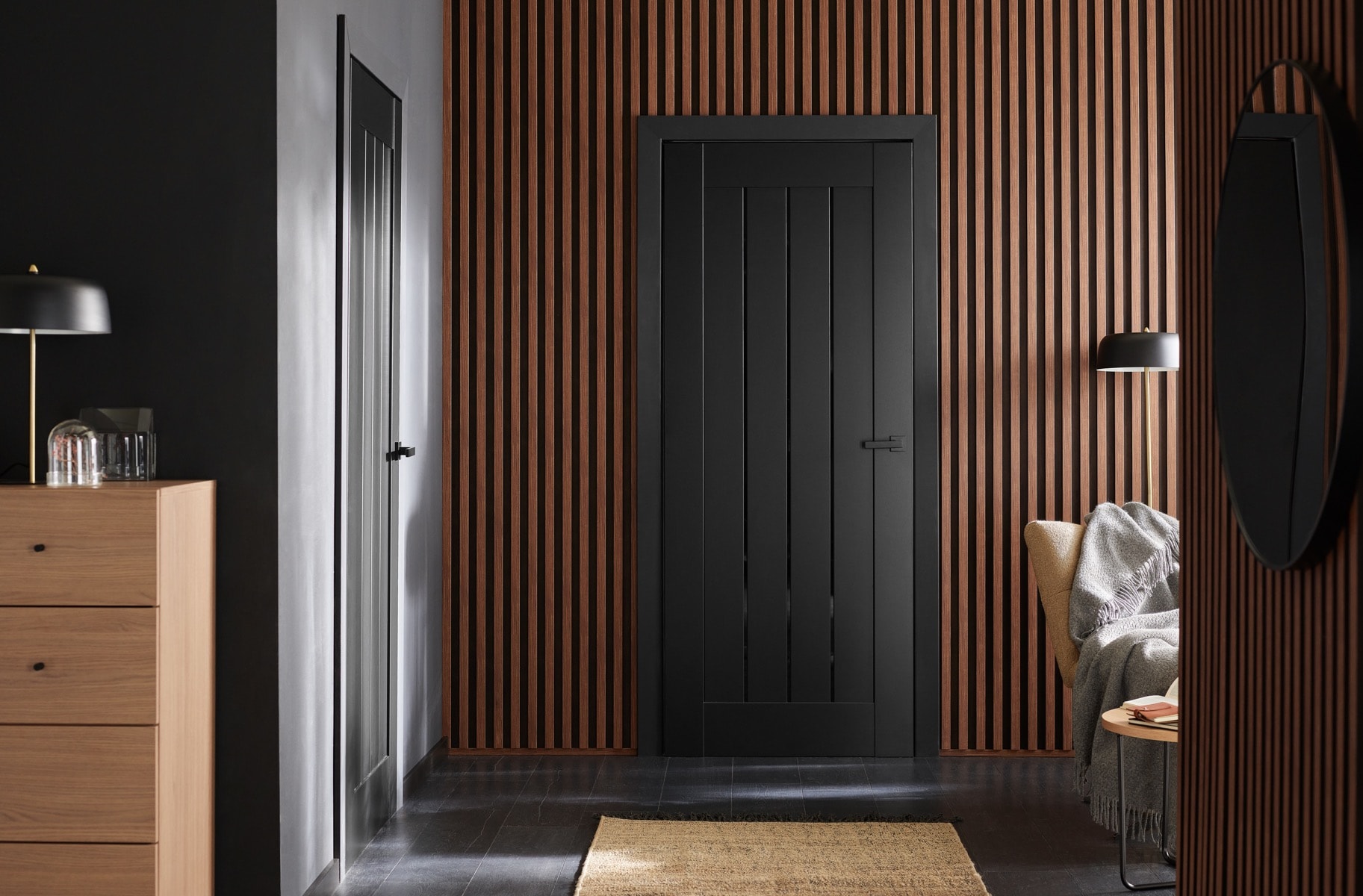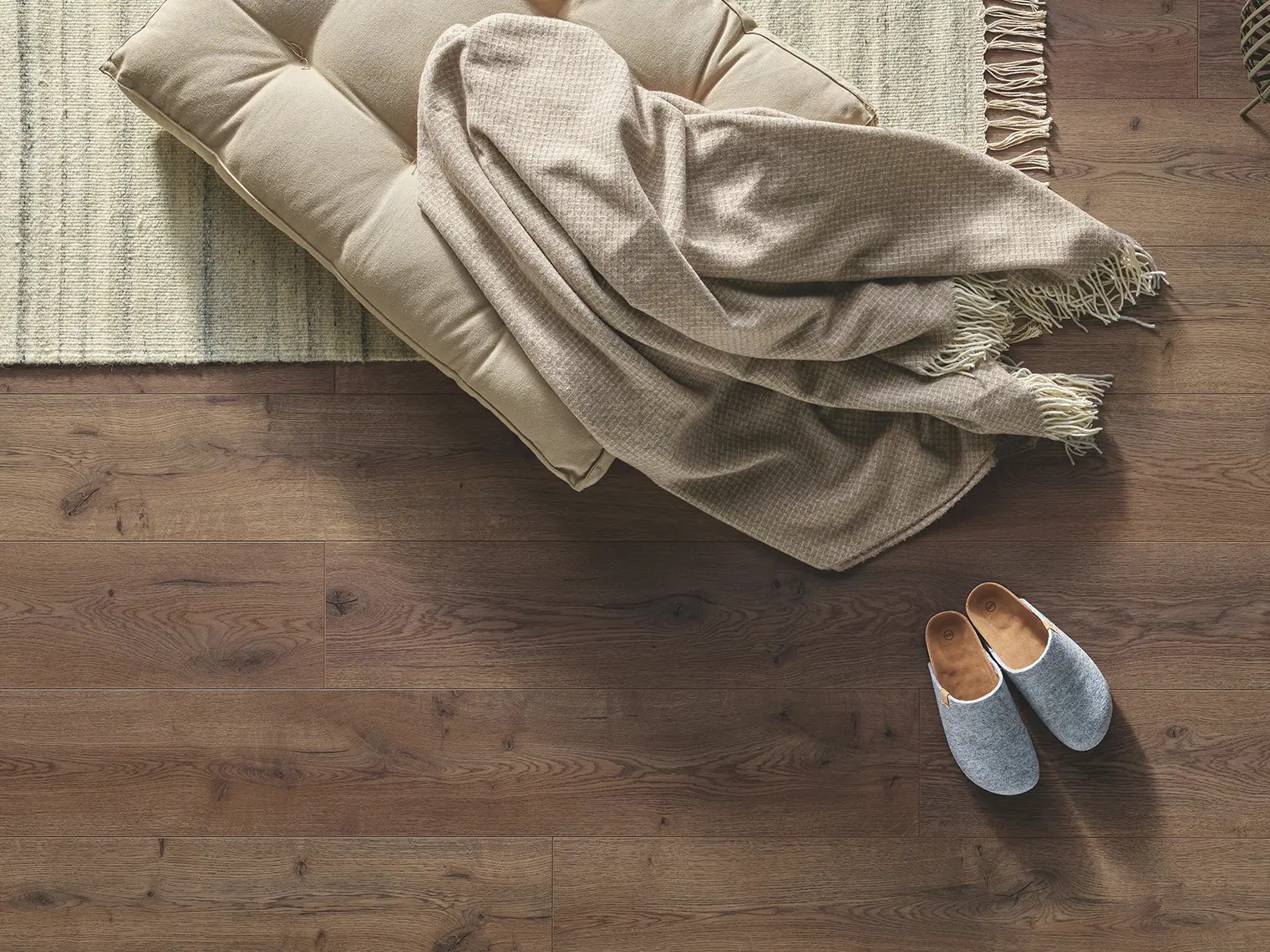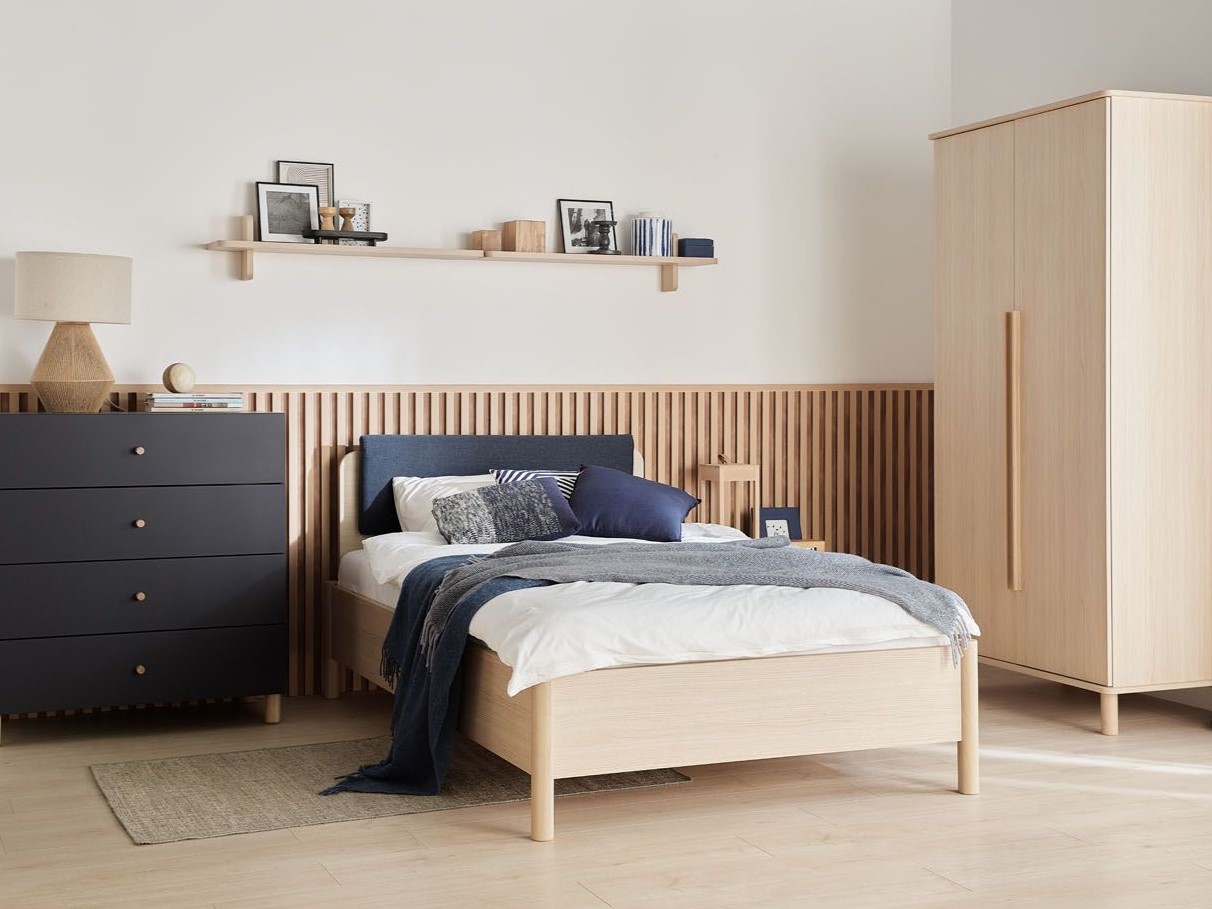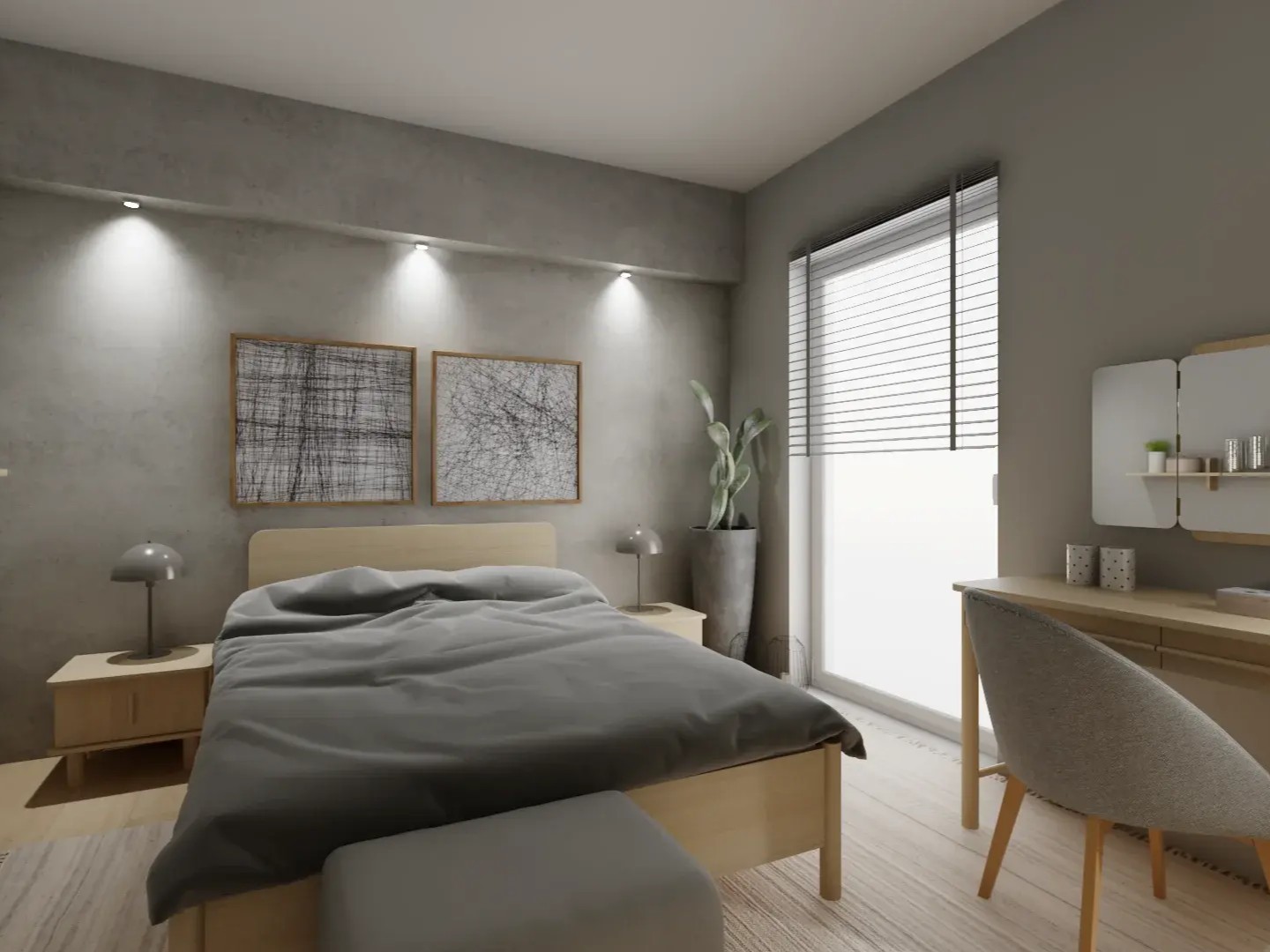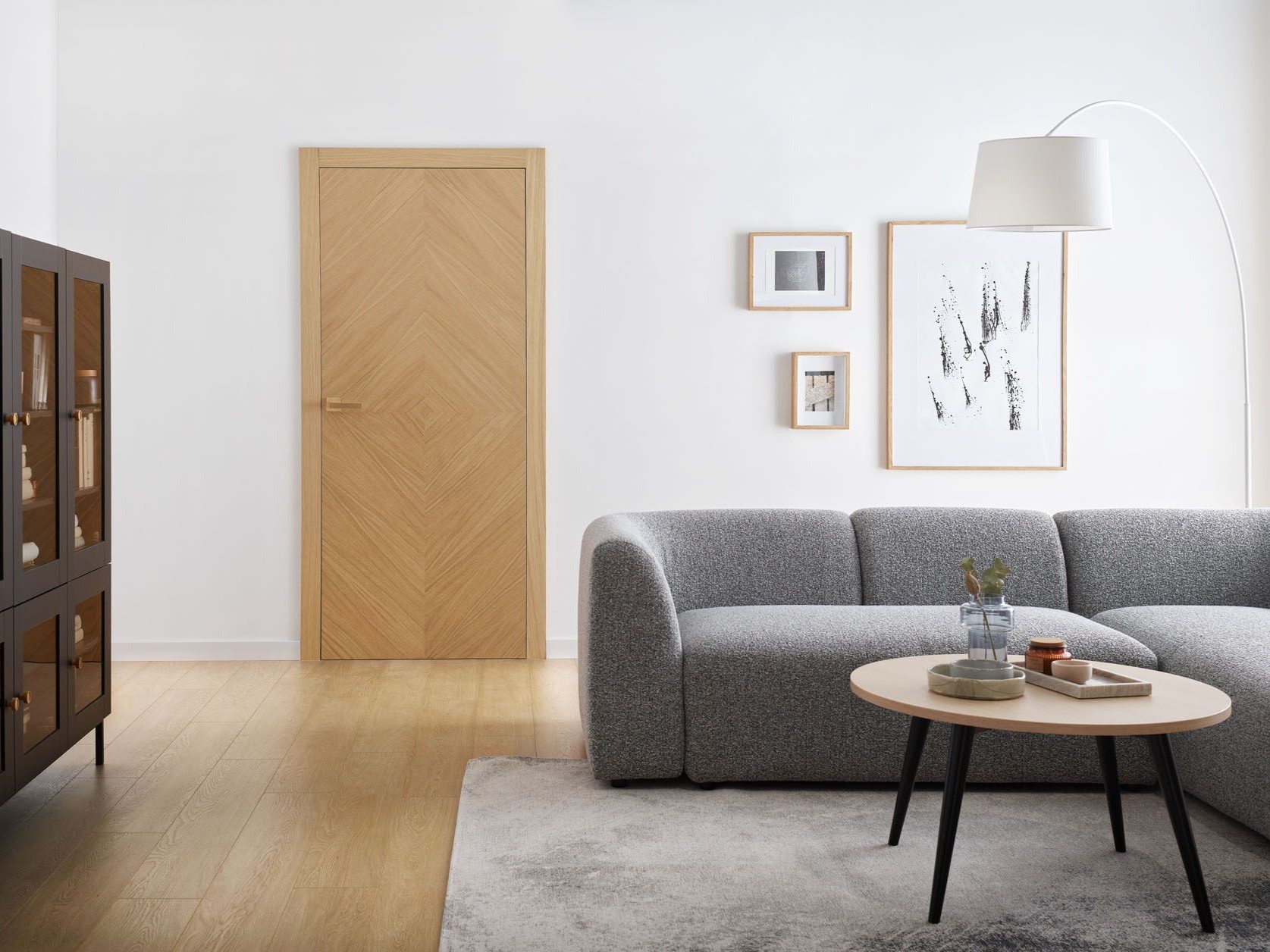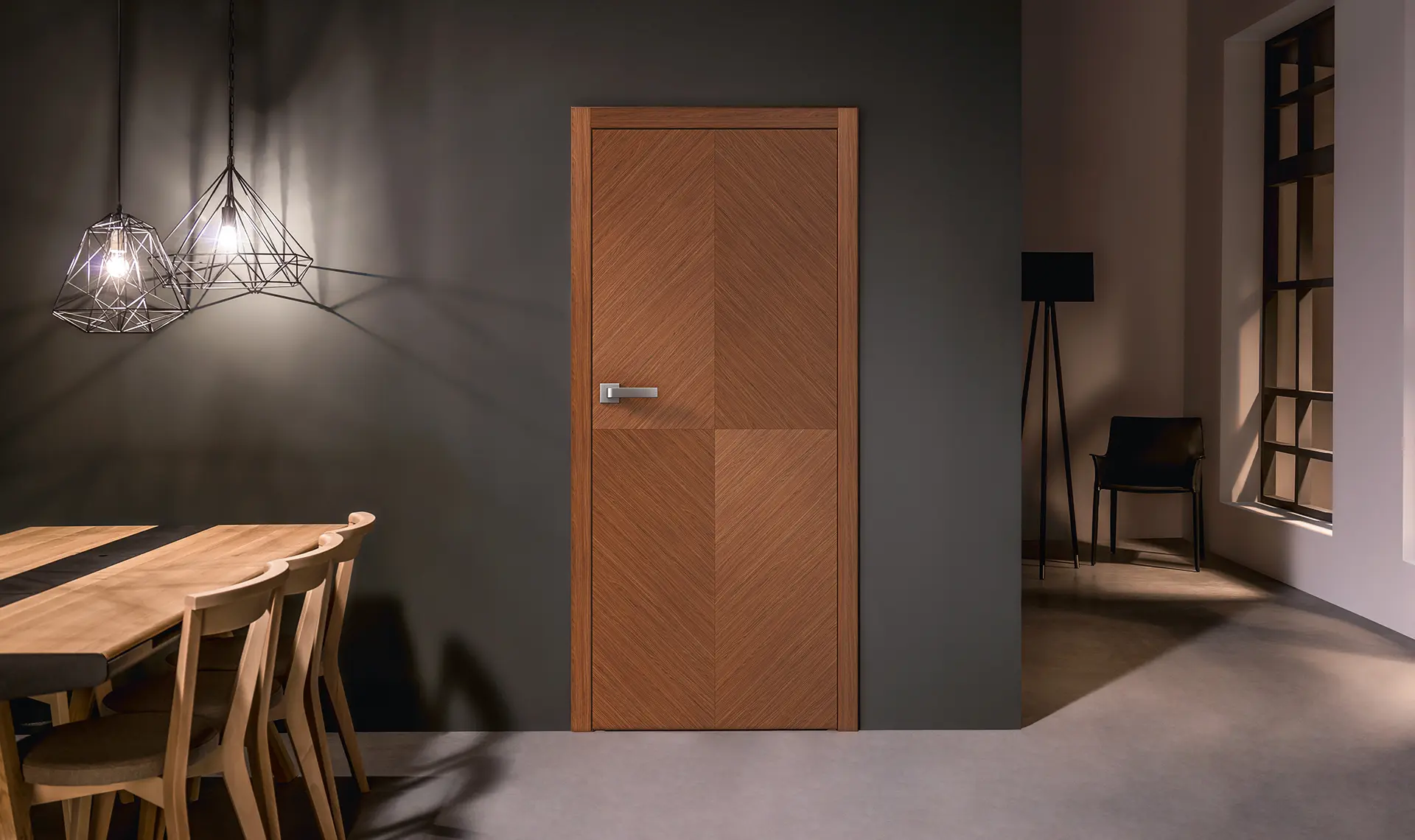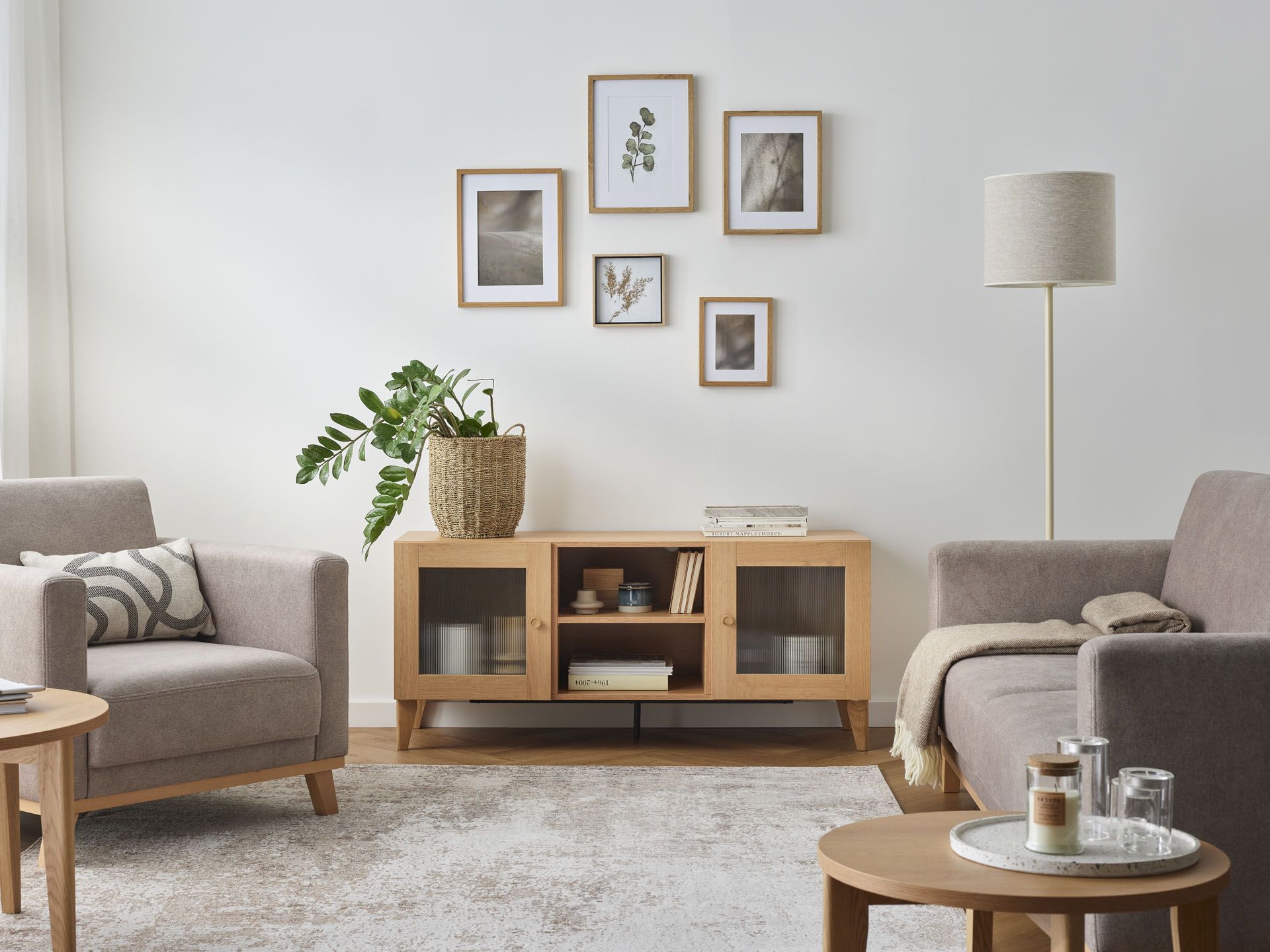What colour of interior door
interior doors? white, brown or coloured
Internal doors in a home don't just have to be an element that separates the different rooms from each other. We now have such a wide choice of materials, designs and colours that we can boldly experiment and make them an important design element - intriguing and eye-catching. What colour is best for interior doors?
Colours have an important function in an interior - they not only influence the character of a room, but can also optically enlarge it or hide minor architectural deficiencies. The colours used in a room can compete with each other by means of contrast or they can flow smoothly from lighter to darker. The most important thing, however, is that they form a coherent whole in the interior. A harmonious arrangement will give us a feeling of calm, allow us to relax and make us feel at ease.
The colours of the doors will also play an important role in this, as they will become a compositional clasp to the living area. Today's facings give us unlimited choice, not only in terms of the colour of the leaf, but also its more or less perceptible structure and finish - matt or glossy.
Which interior door colour should we choose to make the interior cosy, functional and simply ours?
FLOOR, WALLS OR FURNITURE - WHAT'S THE COLOUR OF THE DOOR TO MATCH?
There are no fixed rules when it comes to decorating interiors, it all really depends on ourselves - the aesthetics in which we feel comfortable and the effect we want to achieve. The same goes for the colour of the door. We can make them the focal point of a room, standing out from the rest of the arrangement, or quite the opposite. We can make the door complement the other elements of the room- the floor, wall colour, furniture or decoration.
However, to avoid a chaotic mix of colours in the entrance area, it is advisable to ensure that the door colours form a coherent composition. In large houses and flats, we can use door finishes to emphasise the separate character of the different parts of the house. With the right layout (especially a slightly longer, curving corridor), this can also work in a smaller flat. If we want the doors to better match the design of specific rooms, we can always choose wings covered with a special paint film and finish them on the inside in any colour.
A black plain door on a grey background will create a distinctive decoration of the interior and attract the gaze of intrigued guests. On the other hand, a classic, milled white leaf, blended into a wall of the same colour, will create a uniform composition that optically enlarges the space. Juxtaposed with natural oak planks on the floor will be the icing on the cake.
And what about the furniture? The colour of the doors may also correspond to the style of chests of drawers, wardrobes or sofas in the room. It is up to us whether the leaves blend in with the background or whether they are a distinctive addition.
WHAT COLOUR SHOULD I CHOOSE FOR MY INTERIOR DOORS?
We currently have a huge range of options on the market. When choosing a door colour, we can go for tried and tested and universal colours or opt for unusual solutions - e.g. doors in two colours. What options are worth considering when furnishing your four walls?
1. THE TIMELESS AND UNIVERSAL WHITE DOOR COLOUR
Subdued, classic and always fashionable - white doors go with everything and provide a subtle backdrop to highlight other elements of the space. White does not dominate the room, quite the opposite. It allows almost unlimited play with different colours, textures and patterns.
The white colour of the door will work in every room, but will play a special role where we want to lighten the room and optically enlarge it. It will create a harmonious whole in light-coloured interiors, furnished with furniture of the same colour, but nothing stands in the way of white leaves being a contrast to dark walls or floor. We can successfully match them with practically any other colour. They will go well with black or cool grey, as well as with warm shades of brown and beige - depending on the combination, we can create a space that encourages relaxation, fun or hard work.
The Prezzo door leaf is suitable for the living room, for example - it is available in rebated and non-rebated versions, as well as sliding versions. The white matt foil will emphasise the neat character of the interior and will go well with a classic and simple design. For more shaded rooms - such as hallways - where there is usually little natural light, we can choose a version with glazing. There is no need to worry about privacy, as nothing will be visible through the milky matt glass.
On the other hand, the original Signa Premium door with its characteristic milling will be a good choice for those who seek unusual and eye-catching solutions for their home. The universal character of the door leaf makes it a perfect complement to both modern and classic arrangements, introducing an interesting and delicate visual accent.
2. EMBRACE THE CALL OF NATURE AND CHOOSE A WOODEN DOOR
The shade of natural wood evokes positive associations and creates a cosy and warm atmosphere in interiors. So why not introduce it in the form of interior doors? The versatility of wood allows us to make various design combinations - we can confidently combine it with other materials such as glass, concrete or metal. We don't have to decide on a strictly wooden door - contemporary door veneers successfully imitate its colour and structure. Depending on our needs, we can choose between a natural veneer or laminate finish.
Wood-coloured doors will optically extend the wooden floor. In order to achieve a harmonious effect, it will therefore be very important to match their shade and pattern to the plank or panel finish. It is better to avoid too great a contrast. In this way, we will also create a compositional bracket for the wooden furniture elements.
Such a light and warm interior can be created with Nordia door leaves. They are available in as many as 16 types of veneers, which imitate such types of wood as oak, maple, walnut, pine, elm or ash. It is therefore easy to match their colour to our floor panels or natural planks.
3. A BREATH OF FRESH AIR: GREY ON THE DOOR
Grey on the door is slightly less obvious than white, but just as versatile. If you want grey to play a leading role in the living room or bedroom, don't be afraid to match the door with a wall and furniture in a similar shade. Steel, dove, ash, warm or cool colours - different types of the same colour will complement each other perfectly. But grey can do so much more! If it is used on both the door and the floor, it adds depth to the interior and makes the whole look homogeneous, subdued and aesthetically pleasing. White or wooden furniture can also be used in this way to liven up the ubiquitous grey.
A grey door is a particularly good idea for a children's room. Not only will it balance out the intense colour of the walls and the accessories that often go there, but it is also a very functional choice. After all, all dirt and scratches will not be as visible on a grey door as they would be on a white door.
4. ECCENTRIC AND DARING: THE DARK DOOR COLOUR
Black is often approached with distance and a degree of uncertainty when it comes to interior design. Not at all! Dark doors do not have to overwhelm us - we can easily tame them and make them harmoniously complement the design of our home.
A rule of thumb is to balance dark colours with lighter ones - not only will they bring a more optimistic mood to the interior, they will also bring in more light. The Silgo door leaf in the non-leaf version with a dark grey colour will look great against a graphite wall and in the company of a white frame. Their uniform surface and metallic finish of the edges will add elegance to the interior, and the wooden floorboards will warm it up a bit. The living room in this style will be complemented by a comfortable grey sofa.
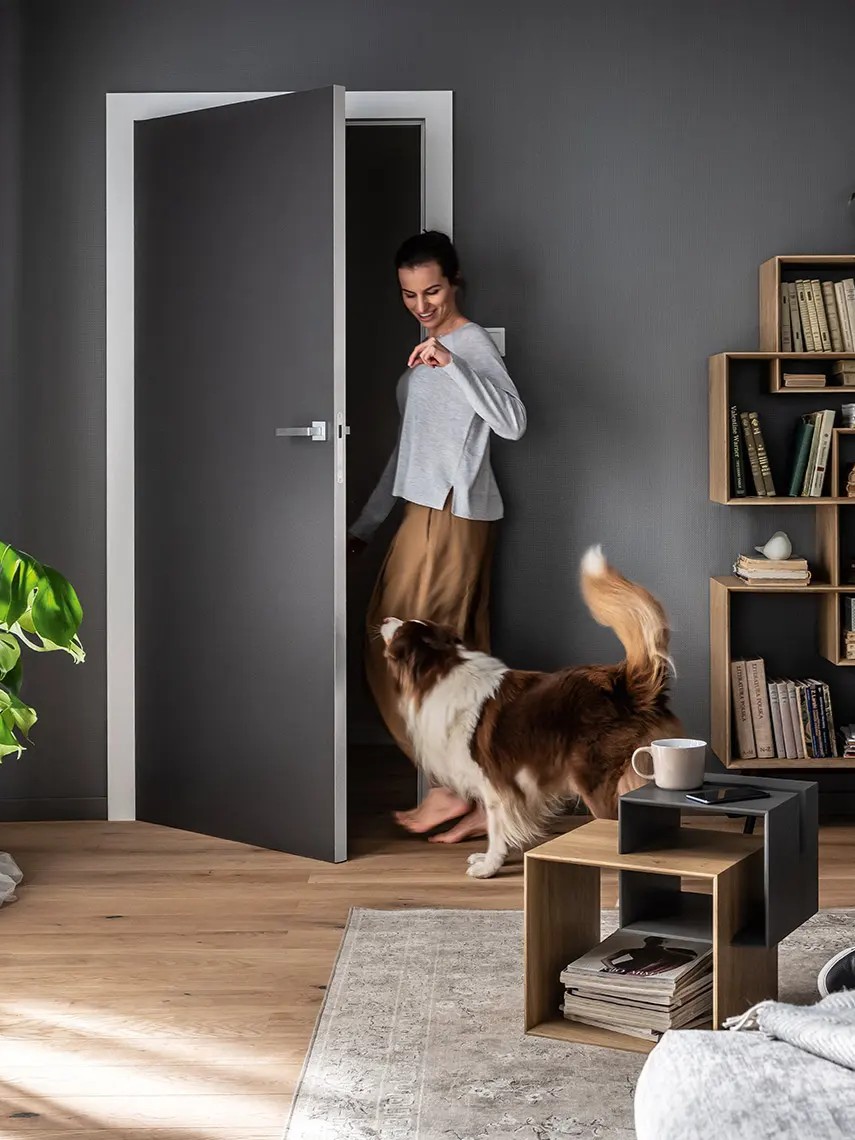
5. DOORS WITH A COLOURED BORDER
In our private space, we don't have to limit ourselves to choosing just one door colour. If we want to liven up the interior design and experiment a bit with it, let's opt for a two-coloured Modus leaf. The edge finished with a plywood-like material will emphasise the original character of this element and bring a bit of nature into our corners. There is also a choice of anthracite edging, which in combination with the matt white finish will provide a distinctive accent to any interior.
Introduce more colour with Rimo doors with a coloured edge. This is a great solution if you want to use the door to subtly emphasise the individual character of a room, while at the same time maintaining a consistent arrangement throughout the home. A discreet accent in a subtle shade of white, black or silver is useful, for example, in children's or youth rooms. Subtle door edge finishes will accentuate the individual style of the occupants.
A contrasting accent on the door can also become a starting point when choosing accessories and decoration. If you opt for a white door with an anthracite edge, it is worth ensuring that this elegant and modern colour is reflected in the interior design - for example in the form of metallic details, lamps in dark shades, geometric patterns on cushions or graphics in black and white.






